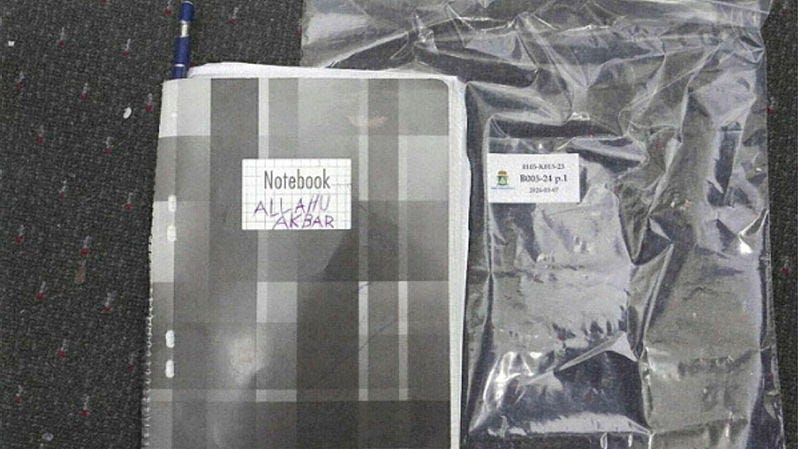The trial revolving around the preparation of a terrorist act and participation in a terrorist organization has entered its second week, commencing with the interrogation of the four defendants. The first defendant, a 25-year-old man, stands accused alongside his younger brother and a third man in their 20s of plotting a terrorist attack in Sweden under the banner of ISIS. Initially reticent, the 25-year-old began his testimony by describing himself as a deeply religious, unemployed convert to Islam. He admitted to exploring concepts like ”jihad,” which he acknowledges might be perceived as frightening and alien within the Swedish context. He stated that his pursuit of knowledge led him to conversations with ”learned individuals,” visits to the Tyresö mosque, and extensive online research. Reflecting on this period, he conceded that his online interactions could be construed as radical and extremist, admitting that his past thoughts and writings, viewed with hindsight, lacked sound judgment and were based on misguided perceptions. He emphasized that he never harbored genuine intentions to act on these ideas.
The defendant confessed to indulging in ISIS propaganda videos and engaging in discussions about weaponry, clarifying that these activities were driven by a sense of intrigue rather than a desire to acquire weapons or explosives. He explicitly denied any intention to carry out an attack, attributing his online behavior to a fascination with the subject matter. He painted a picture of limited opportunities, asserting that many doors were closed to him, leaving him vulnerable to the allure of what he now recognizes as radical and extremist online communities. These spaces, he claimed, offered a sense of belonging and acceptance that he lacked elsewhere. He portrayed himself as someone seeking connection and meaning, ultimately finding it within these online echo chambers. He described feeling marginalized and misunderstood, suggesting that this vulnerability contributed to his engagement with extremist content.
Prosecutor Lars Hedvall confronted the 25-year-old with chat logs revealing his dissemination of ISIS-related materials. The defendant denied pledging allegiance to ISIS, insisting that he shared the content for discussion purposes among like-minded individuals rather than on behalf of the terrorist organization. He maintained that his online persona was a fabrication, a means of projecting an image of involvement and importance within the online community. The prosecution presented further chat logs detailing apparent terror plots discussed with another individual. When questioned about these plans, the defendant dismissed them as mere online bravado, characterizing himself as an ”internet warrior” engaging in empty rhetoric. He reiterated that these conversations lacked any basis in reality and did not reflect any genuine intentions to commit violence.
The defendant’s testimony reveals a complex interplay of factors that contributed to his online activities. His narrative speaks to the allure of extremist ideologies for individuals feeling disenfranchised and seeking a sense of belonging. His admission to finding ISIS propaganda “cool” and his engagement in discussions about weaponry point to a morbid curiosity and perhaps a desire for a sense of power or control, albeit within a virtual realm. He acknowledges the problematic nature of his past behavior, attributing it to a lack of perspective and a susceptibility to the influence of online echo chambers. The prosecution’s presentation of chat logs, however, raises questions about the veracity of his claims, suggesting a deeper level of engagement with extremist ideologies than he admits.
The ongoing trial seeks to unravel the extent of the defendants’ involvement in the alleged terror plot. The 25-year-old’s testimony provides a glimpse into the psychological and social dynamics that can lead individuals down the path of radicalization. His narrative underscores the importance of addressing the root causes of extremism, including social isolation, feelings of disenfranchisement, and the seductive nature of online echo chambers that reinforce and amplify extremist views. The trial will continue to delve into the evidence, seeking to determine whether the defendants’ actions constituted genuine preparation for a terrorist act or were merely the product of online bravado and fantastical thinking. The prosecution will need to establish a clear link between the defendants’ online activities and concrete plans to commit violence.
The case highlights the challenges of navigating the increasingly blurred lines between online rhetoric and real-world threats. It raises important questions about the nature of radicalization in the digital age and the responsibility of individuals and platforms to prevent the spread of extremist ideologies. The trial’s outcome will have significant implications for the ongoing fight against terrorism, particularly in the realm of online radicalization. It will likely set precedents for how online activity is interpreted and used as evidence in cases involving alleged terrorist plots. The case also underscores the need for a nuanced understanding of the motivations and vulnerabilities of individuals who become entangled in extremist online communities.














